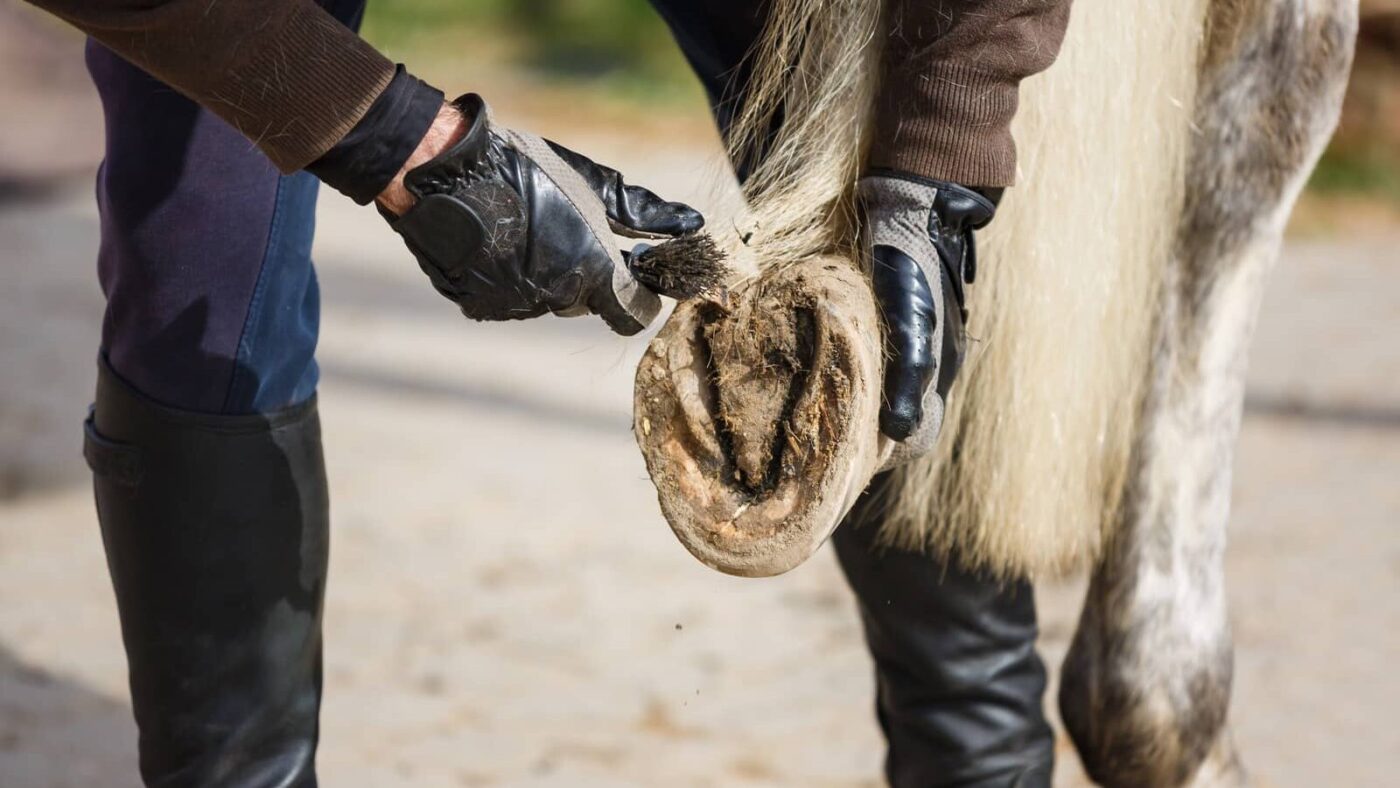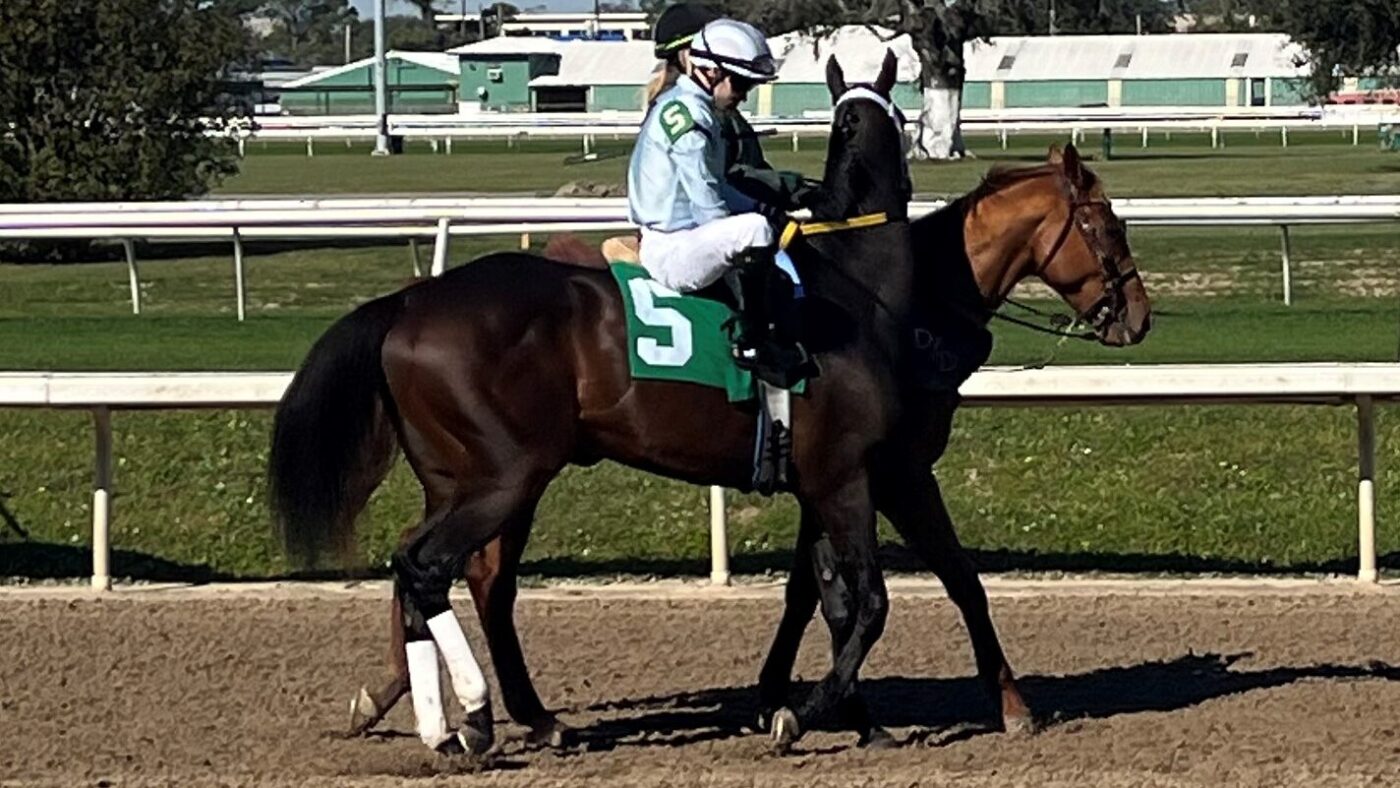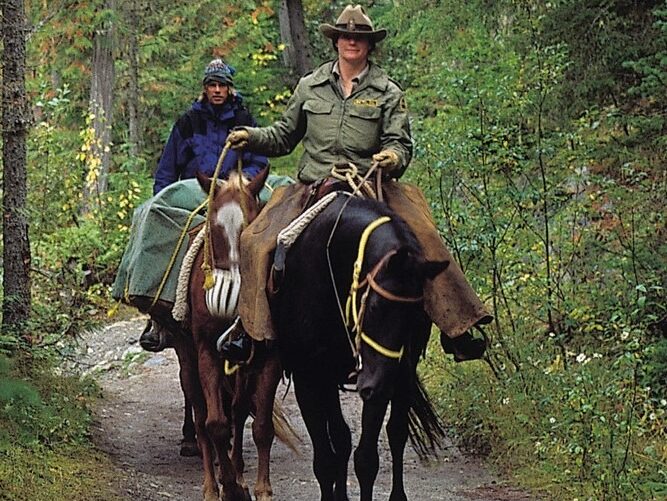Last updated: January 7, 2024
Thoroughbreds are best known for their racing prowess; however, many off-track thoroughbreds are retrained in other disciplines. So the question often arises: Are Thoroughbreds good trail riding horses?
Generally, Thoroughbreds don’t make good trail-riding horses, especially for beginner riders. They spook easily, are high-strung, and aren’t surefooted.
A typical Thoroughbred is athletic, intelligent, and a willing horse, but it’s also high-strung and sensitive to the slightest pressure. But don’t be discouraged; if you are patient and determined, you can find a promising Thoroughbred for trail riding.
Thoroughbreds aren’t ideal trail-riding horses.
Horses are individuals; generally, Thoroughbreds don’t possess the conformation or temperament expected in a good trail riding horse; however, with patience, you can find a suitable one. The following are essential factors to consider when shopping for a Thoroughbred for trail riding.
Trail riding horses need a calm temperament.
When shopping for a trail riding horse, temperament is a critical factor to consider for numerous reasons, primarily because something unexpected is likely to happen, and you don’t want to be on a horse that’s quick to spook. (Temperament is a horse’s demeanor, determined by its breed, environment, or age.)
A good trail riding horse has a calm disposition. It’s hard to make out a horse’s disposition in a short time. However, walk around the horse, pick up its feet, saddle it yourself, and then take it for a ride. If the horse rears or bucks, strike him from your list.
Ask the seller as many questions as possible about the horse, its training, injuries, and rider accidents. Finally, see if the seller will let you try the horse for a week to ensure it’s a good fit for you. These steps should give you an idea of the horse’s temperament,
A trail riding horse needs sturdy feet.
A trail riding horse’s hoofs are its foundation, so you must examine its feet. If you’re uncomfortable evaluating a horse’s foot, bring a farrier, or someone experienced with horses to assist you.

Thoroughbreds typically have weak hoofs. Thin hoofs could be the result of the breeding emphasis on speed and conformation without regard to the horse’s feet.
Checking a horse’s feet is always important, but it is crucial when buying a Thoroughbred. Thoroughbreds are notorious for their poor feet, and they often have thin flat soles, long toes, and weak hoof walls, conditions which make them poor trail riding candidates.
Bad feet make a horse more susceptible to injury on the trail and lead to lameness. A competent examination of any prospective trail horses’ feet is vital. To learn more about the health of Thoroughbred’s feet, I recommend you read my article on the topic.
Trail riding horses should be social animals.
Trail riding typically involves multiple horses traveling near each other. You must have a horse that doesn’t always want to fight other horses.
Last year, we went on a trail ride with close to a hundred horses. In our group was a man riding an unruly stallion. It was no surprise to any of us that after fighting with his horse for the first mile, he left the group and headed home.
Riding a horse that can’t tolerate being around other horses is a significant problem. When checking out prospects, ask if the horse has issues getting along with other horses. Also, during your test ride, get close to other horses and watch how they interact with others firsthand.
Trail riding horses should walk at 3-4 mph.
Trail riding is usually a group activity, so it’s best to have a horse that travels at a moderate pace, not one that is too much slower or faster than the group. A good natural speed is between 3 and 4 mph.
Thoroughbred horses are tall breeds that can cover a lot of ground quickly. They also like activity and have the desire to move; this combination can make for a miserable ride, especially in groups that travel at a slow pace. An ideal trail riding horse has a natural gait that stays with the pack without effort from you.
Pronounced withers help keep a saddle in place.
A good trail riding horse should have pronounced withers that blend nicely into the slope of the shoulder and back. Good conformation of the withers provides for the best possible fit of a saddle.
A saddle that fits your horse correctly will help your horse stay sound and saddle-sore-free. It will also provide a more comfortable seat for you, even during long rides.
Thoroughbreds’ withers are often too high to fit a western saddle comfortably. There are ways to manipulate the saddle pads to make a saddle work on a high withered horse; however, the saddle will often move when riding and causes bruising and pressure sores.
Besides bruising and pressure sores, high-withered horses are prone to develop soreness in their muscles and joints during a trail ride. When buying a horse, consider the height of its withers.
Choose a trail riding horse that fits your size.
Recently, we had a group of Thoroughbreds and Quarter horses together in a paddock. The Thoroughbreds towered over all the Quarter horses. This made me wonder if Thoroughbreds are too tall for trail riding.
A properly sized trail riding horse is one you can mount and dismount with ease on the trail. Thoroughbreds are typically tall horses, so check to ensure you’re able to easily get your foot in the stirrup before hitting the trails. If it’s challenging, the horse is too tall for you.
Thoroughbreds range in height from 15HH to over 17HH. However, their typical height is 15.3 to 16 hand range. For many people, mounting and dismounting a 16- or 17-hand horse is a challenge on the trail.

Nothing is as frustrating as struggling to remount because you can’t reach your stirrups. Choosing the proper size Thoroughbred is a crucial consideration for trail riding.
Not only is mounting a consideration, but tall horses typically have a more difficult time navigating rugged terrains, such as ones with large rocks and steep hillsides.
Know your Thoroughbred’s medical history.
Thoroughbreds off the track often have a history of injuries. You need to talk to the seller about the horse’s health and have the animal vet checked. Some of the most common racing injuries result from wear and tear on the front legs below the knees.
Such as bowed tendons, injuries to the fetlock, bone chips, and fractures, any of which could affect the horse’s viability to be a trail horse. Check the horse’s legs for scar tissue on the knees or front fetlocks, which are indicators of previous injuries from falls.
Thoroughbreds aren’t good trail horses for beginners.
Thoroughbreds can be good trail riding horses; however, they are high-spirited, anxious, and intelligent animals. When these horses are guided by an experienced hand, they can do almost anything.
Thoroughbreds are intelligent and have a strong drive to please their rider, making them easy to train with leg cues and body weight shifting. These are admirable traits but can also lead to frustration.
Because Thoroughbreds are intelligent and thrive on being their best, they tend to get aggravated with unsure riders. Thoroughbreds demand to be led by a competent person. I wrote a helpful article on the best horse breeds for beginners; I recommend reading it.
Not all Thoroughbreds are poor trail riding horses.
Ideally, you were allowed to try him for a week and take him for a trail ride, and you were able to see how he performed in different situations. Hopefully, this allowed you to determine whether the traits you saw at your initial visit were borne out on the trail.

Conclusion: Are Thoroughbreds Good Trail Riding Horses?
In the end, the choice is yours. Thoroughbreds are an incredibly versatile breed with great athletic ability and a desire to please. Remember to take your time choosing a horse, and don’t settle. If you aren’t 100 percent sure the horse is right for you, pass on it for now.
Trail riding is a way to relax, so be patient and find your perfect partner to travel with and enjoy the outdoors.
Below is a helpful Youtube video that describes Thoroughbred characteristics.

About the Author: Miles Henry
Lifelong Horseman | Racehorse Owner | Published Author
Miles Henry brings over 25 years of hands-on experience training and owning Thoroughbred racehorses. Raised with Quarter Horses and Appaloosas, he’s spent a lifetime learning from horses—on the track, in the barn, and in the field. Today, he runs a small but successful racing stable in Louisiana and shares real-world insights on HorseRacingSense.com, helping horse owners, fans, and bettors navigate the sport with confidence.
📚 Books: View Miles’s books on Amazon »
🎧 Podcast Guest: Animal Tales Ep. 32 |
YouTube Interview
📩 Newsletter: Sign up for racing tips and horse care advice »
🔗 Follow Miles:
Twitter |
Facebook |
YouTube


